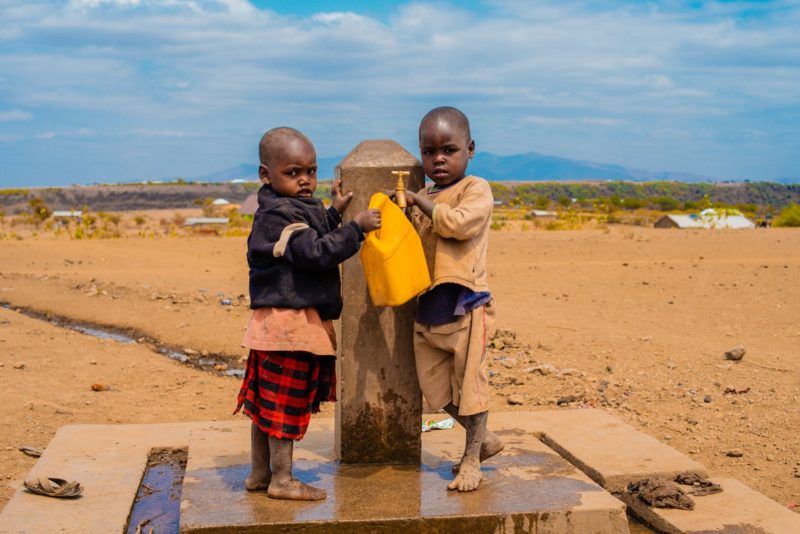Philanthropy’s Power: Advancing Access to Clean Water, Electricity, and Food Globally

Around the world, access to life’s most essential needs—clean water, electricity, and sufficient food—remains out of reach for billions. Despite decades of international development efforts, many communities continue to face resource shortages that limit access to essential services, including health, education, and opportunities. This content examines how targeted philanthropy has stepped in to address these challenges, not only by delivering aid but also by empowering local communities, fostering innovation, and building long-term resilience. From access to clean water to solar-powered electricity and sustainable food solutions, philanthropy is playing a critical role in shaping a more equitable and hopeful future, one investment, partnership, and empowered person at a time.
The Global Crisis: Lack of Basic Needs
Around the world, billions of people face a daily struggle due to a lack of basic resources. Access to clean water, reliable electricity, and nutritious food remains a distant dream for many despite years of global development efforts. Currently, over 2.2 billion individuals lack access to safely managed drinking water, which impacts their health and economic opportunities. Similarly, nearly 940 million people live without electricity, limiting their ability to study, work, or connect with broader markets and communities. Additionally, food insecurity—driven by factors such as conflict, climate change, and economic disruptions—places around 828 million individuals at risk of malnutrition or starvation. The consequences of these issues extend beyond mere hunger and sleepless nights; they have lasting effects that span generations, hindering growth, learning, and potential.
Across these interconnected challenges, targeted philanthropic action steps take center stage as a catalyst for change. While government agencies and the business sector play vital roles in providing infrastructure and regulatory frameworks, philanthropic initiatives fill critical gaps, often when immediate, flexible intervention is most needed. These efforts can rapidly mobilize resources, pilot new ideas, and respond nimbly in crisis settings, offering hope and empowering communities that might otherwise be overlooked.
How Philanthropy Shapes Access to Clean Water
Gaining access to clean, safe drinking water can have a profoundly positive impact on lives. Philanthropic organizations have devoted significant resources to establishing wells, water purification stations, and sanitation programs in remote or disaster-affected regions, particularly where public infrastructure is weak or nonexistent. Large-scale philanthropic projects have brought entire villages out of water poverty, reducing disease, improving school attendance, and boosting women’s safety by eliminating the need for long daily treks in search of water sources. For instance, in many Sub-Saharan African and South Asian communities, residents have seen their children thrive due to initiatives that install solar-powered pumps or introduce rainwater collection systems.
However, longevity and sustainability remain complex challenges even where generous funding is available. It’s not enough to install a well or filtration system; these technologies require ongoing training, maintenance, and community involvement to remain operable for years rather than just months. The best philanthropic endeavors now focus on community ownership, ensuring that those who benefit also participate in planning and upkeep. This “teach a person to fish” mindset reinforces dignity and control while also stretching every donated dollar farther over time.
Powering Up: The Pursuit of Reliable Electricity
Electricity does more than just bring light; it powers learning, drives business growth, provides access to medical care, and even ensures safety. Across developing nations, millions of homes remain in darkness each night, reinforcing cycles of poverty and isolation. Philanthropic donors have been instrumental in shifting this paradigm by funding solar lanterns, home-scale solar batteries, and community microgrids where government rollouts are stalled. These innovative projects have delivered more than simple convenience: schools stay open later for evening classes, clinics can refrigerate vital vaccines, and entrepreneurs gain hours previously lost to sunset.
Charitable support has enabled experimentation with emerging technology, reducing costs and providing proof of concept in regions that other sectors sometimes view as high-risk. Importantly, investments also focus on renewable energy, enabling communities to leapfrog fossil fuels and adopt sustainable, clean platforms from the outset. As innovation spreads and more communities see what is possible, charitable groundwork lays a foundation for larger commercial and governmental expansion. For young students and aging parents alike, something as small as a solar lamp can mean a safer, more hopeful tomorrow.
Addressing Food Insecurity: The Role of Charitable Giving
Each year, despite plentiful global harvests, hunger and malnutrition persist in both rural and urban settings. According to the World Food Programme, nearly 828 million people faced hunger in 2021—a staggering number with profound implications for human development and global security. Charitable giving has responded through a variety of approaches, including supporting food banks and emergency feeding initiatives, distributing seeds and fertilizer to struggling farmers, and funding school meal programs that serve as a nutritional lifeline for children. These programs not only alleviate hunger but also improve health outcomes and educational performance, setting the stage for a more vibrant future.
More recently, philanthropists have expanded their focus to address food insecurity and its root causes. Investments in smallholder agriculture, water-efficient crops, and farmer cooperatives help communities become more resilient to climate shocks and market volatility. These strategies not only feed more people today but also strengthen the ability of vulnerable families to withstand tomorrow’s threats. It’s a movement from handouts to genuine food sovereignty.
Sustainable Solutions: Fostering Community Ownership
Lasting solutions don’t just arrive from outside; they’re built and maintained from within. Decades of development experience show that when local communities are engaged in designing, managing, and monitoring resources, the results are more sustainable. Initiatives such as community water committees, women-led agricultural groups, and youth energy training courses have demonstrated significant success in maintaining systems and expanding their impact. Residents feel invested in a solution they helped create and are far more likely to adapt it over time.
Philanthropy that places the community at the center—rather than imposing top-down solutions—opens doors to trust, transparency, and genuine participation. Training local technicians to repair pumps or empowering mothers to lead nutrition workshops not only stretches dollars further but also unleashes a powerful sense of ownership and pride. The real legacy of effective philanthropy is not only the resources delivered but also the capacity and independence nurtured.
Collaboration Across Sectors: Public, Private, and Philanthropic Partnerships
No single organization, government, or sector can overcome these intertwined challenges alone. A profound impact depends on creative cross-sector partnerships, where businesses, governments, civil society, and philanthropists each contribute their unique strengths and resources. For instance, governments create legal frameworks and garner local buy-in, while the private sector innovates in areas such as cheap energy storage and water purification. Philanthropy plays a catalytic role—risking early capital, sharing lessons learned, and connecting actors that are otherwise siloed.
Successful examples abound: global alliances for safe water access, multi-agency nutrition coalitions, and energy innovation labs that bring solar power to previously unreached communities. A coordinated approach enables each sector to scale what works, bridge funding gaps, and reach even the most challenging-to-serve populations. Well-structured partnerships reduce duplication, spark new models, and achieve levels of impact unattainable by any single group acting alone.
Challenges and Criticisms Facing Philanthropic Solutions
Despite extraordinary achievements, philanthropy faces valid criticisms. Projects that bypass local expertise or ignore power imbalances can unintentionally harm or falter over time. Dependency, lack of transparency, and short planning cycles are frequent concerns voiced by both recipients and outside observers. Addressing these issues requires ongoing humility—a willingness to share power, listen deeply to local voices, and learn from past failures.
The strongest charitable actors now prioritize transparency and ongoing feedback loops, establishing standards that foster genuine partnerships rather than paternalistic giving. The most meaningful, lasting impact is achieved not by those who “give the most” but by those who are most responsive to the wisdom and realities of the communities they aim to serve.
The Path Forward: Empowerment and Innovation
The collective effort to provide universal access to clean water, reliable power, and nourishing food is one of humanity’s most significant challenges—and opportunities. From supporting trailblazing solar energy projects to funding next-generation water filtration devices or championing local food cooperatives, today’s philanthropists are helping to lay the groundwork for future progress. Innovation is continuous: solutions must adapt to shifting climate realities, population growth, and an ever-changing technological landscape.
While progress is often slow and setbacks are inevitable, the stories of families drinking safe water for the first time or children learning by lamplight sow hope and determination. The road ahead requires even greater humility, more cross-sector collaboration, and a more substantial commitment to inclusion. As philanthropic actors pursue lasting partnerships and invest in local leadership, the world moves closer to a future where every individual has the means to thrive.
Would you like to receive similar articles by email?





